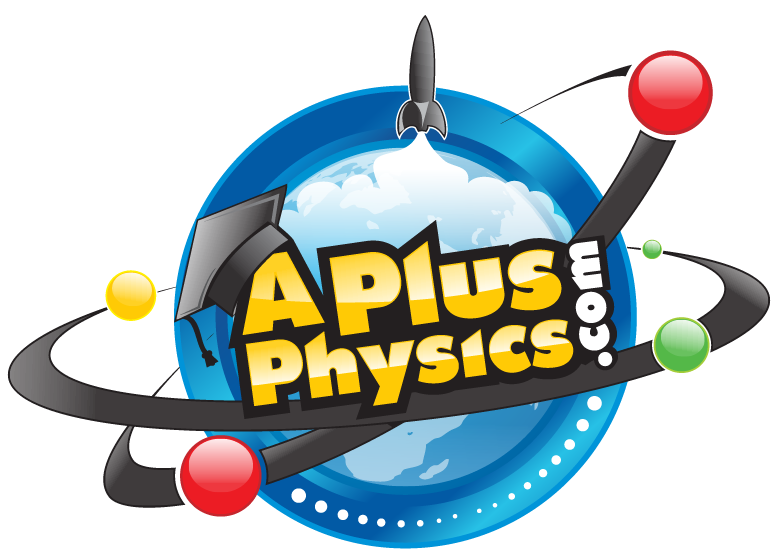Search the Community
Showing results for tags 'orbit'.
-
Name: Mechanical Energy of a Satellite in Circular Orbit Category: Circular Motion & Gravity Date Added: 2018-03-04 Submitter: Flipping Physics The mechanical energy of a satellite in circular orbit is solved for in terms of universal gravitational potential energy. And the velocity of the satellite is compared to escape velocity. Want Lecture Notes? This is an AP Physics 1 topic. Content Times: 0:14 Types of mechanical energy of a satellite 1:21 Solving for the velocity of a satellite in circular orbit 2:34 Solving for the mechanical energy of a satellite 3:31 Comparing satellite velocity to escape velocity Next Video: Impulse for Two Objects being Attracted to One Another Multilingual? Please help translate Flipping Physics videos! Previous Video: Deriving Escape Velocity of Planet Earth Please support me on Patreon! Thank you to Jonathan Everett, Christopher Becke, Sawdog, and Scott Carter for being my Quality Control Team for this video. Thank you to Youssef Nasr for transcribing the English subtitles of this video. Mechanical Energy of a Satellite in Circular Orbit
-
- circular orbit
- escape velocity
- (and 9 more)
-
Name: Number of g's or g-Forces Introduction Category: Circular Motion & Gravity Date Added: 2018-01-28 Submitter: Flipping Physics Description and examples of g-forces or number of g’s. Want Lecture Notes? This is an AP Physics 1 topic. Content Times: 0:14 Equations for g-forces or number of g’s 1:08 Number of g’s when at rest on the surface of the Earth 2:43 Number of g’s when in orbit 3:33 Apparent Weightlessness 4:20 How to experience apparent weightlessness in a car 5:22 Apparent weightlessness examples 6:05 Describing number of g’s again 7:08 More examples of number of g’s Next Video: Gravitational Field Introduction Multilingual? Please help translate Flipping Physics videos! Previous Video: Apparent Weightlessness Introduction Please support me on Patreon! Thank you to Sawdog, Christopher Becke, Frank Geshwind and Scott Carter for being my Quality Control Team for this video. Thank you to Youssef Nasr for transcribing the English subtitles of this video. Picture and Video credits: NASA Logo https://www.nasa.gov/sites/default/files/thumbnails/image/nasa-logo-web-rgb.png Liquid Ping Pong in Space - RED 4K https://www.youtube.com/watch?v=TLbhrMCM4_0 Side view of plane in field - https://commons.wikimedia.org/wiki/File:Airplanes_-_Types_-_Kirkham_Triplane_manufactured_by_the_Curtiss_Engineering_Corp.,_Garden_City,_Long_Island._Side_view_of_plane_in_field_-_NARA_-_17341451.jpg Tesla-Roadster-2020-1280-01 - https://www.netcarshow.com/tesla/2020-roadster/1280x960/wallpaper_01.htm STS120LaunchHiRes-edit1 - https://commons.wikimedia.org/wiki/File:STS120LaunchHiRes-edit1.jpg Soyuz_TMA-13_Edit - https://commons.wikimedia.org/wiki/File:Soyuz_TMA-13_Edit.jpg Hong Kong skyscrapers in a night of typhoon.jpg - https://upload.wikimedia.org/wikipedia/commons/8/8d/Hong_Kong_skyscrapers_in_a_night_of_typhoon.jpg Number of g's or g-Forces Introduction
-
Name: Apparent Weightlessness Introduction Category: Circular Motion & Gravity Date Added: 2018-01-21 Submitter: Flipping Physics Learn why astronauts in the International Space Station appear to have no weight. Want Lecture Notes? This is an AP Physics 1 topic. Content Times: 0:01 What is necessary for an object to be completely weightless? 2:34 Determining the acceleration due to gravity on the International Space Station 3:41 Why astronauts appear to be weightless 4:55 Why the International Space Station does not fall to the Earth 5:37 Objects in orbit experience apparent weightlessness 5:56 Other examples of apparent weightlessness Next Video: Number of g's or g-Forces Introduction Multilingual? Please help translate Flipping Physics videos! Previous Video: Dropping a Bucket of Water - Demonstration Please support me on Patreon! Thank you to Jonathan Everett, Sawdog, Christopher Becke, Frank Geshwind, and Scott Carter for being my Quality Control Team for this video. Thank you to Youssef Nasr for transcribing the English subtitles of this video. Apparent Weightlessness Introduction
-
- space
- weightlessness
- (and 5 more)
-
Name: Altitude of Geostationary Orbit (a special case of Geosynchronous Orbit) Category: Circular Motion & Gravity Date Added: 2018-01-07 Submitter: Flipping Physics Calculate the altitude of a satellite in geosynchronous orbit or geostationary orbit. Want Lecture Notes? This is an AP Physics 1 topic. Content Times: 0:11 What is geosynchronous orbit? 0:47 Drawing the free body diagram and starting to solve the problem 3:02 Solving for the satellite’s angular velocity 4:05 Identifying the masses and radii 5:25 Defining “r” and solving for altitude 6:29 The physics works! Next Video: Dropping a Bucket of Water - Demonstration Multilingual? Please help translate Flipping Physics videos! Previous Video: Deriving the Acceleration due to Gravity on any Planet and specifically Mt. Everest Please support me on Patreon! Thank you to Aarti Sangwan and Christopher Becke for being my Quality Control Team for this video. Thank you to Youssef Nasr for transcribing the English subtitles of this video. Altitude of Geostationary Orbit (a special case of Geosynchronous Orbit)
-
- geosynchronous
- altitude
- (and 6 more)
-
Name: The Force of Gravitational Attraction between the Earth and the Moon Category: Circular Motion & Gravity Date Added: 2017-12-03 Submitter: Flipping Physics According to NASA, the mass of the Earth is 5.97 x 10^24 kg, the mass of the Moon is 7.3 x 10^22 kg, and the mean distance between the Earth and the Moon is 3.84 x 10^8 m. What is the force of gravitational attraction between the Earth and the Moon? Want Lecture Notes? This is an AP Physics 1 topic. Content Times: 0:07 Translating the problem 0:56 Solving the problem 2:15 Determining how long until the Moon crashes into the Earth 4:00 Determining what is wrong with this calculation Next Video: Deriving the Acceleration due to Gravity on any Planet and specifically Mt. Everest Multilingual? Please help translate Flipping Physics videos! Previous Video: How Much is a Mermaid Attracted to a Doughnut? Please support me on Patreon! Thank you to Aarti Sangwan and Christopher Becke for being my Quality Control Team for this video. Thank you to Youssef Nasr for transcribing the English subtitles of this video. The Force of Gravitational Attraction between the Earth and the Moon
-
What I've learned from kerbal space program. TOP 5
caffeinefueledphysics posted a blog entry in Blog caffeinefueledphysics
Okay, so for the last few months in physics we've worked on the kerbal space program, and although my group didn't really accomplish much, i kinda just wanted to finalize a few things that i learned. So there is my top 5 1) Kerbals are easily startled. meaning, these kerbals are astronauts that should have been previously trained and have experienced the forces existing in a spacecraft or spaceplane in the game. clearly this was bypassed as much as the safety measures on my rockets 2) Orbit CAN be achieved, around anything. if you think that you will randomly drift out to space when you launch a rocket, that turned out to be a rare occurrence for me. I often would randomly test out a rocket to see if it was too heavy or light to do anything, and it would drift off, past orbit, and then into orbit of the sun, right near kerbin. 3)Air intake does not work in a vaccuum. and for those of you that think its a no brainer, i went into this with no previous rocket science training besides the universal F=ma and g=9.81m/s2 Therefore, i had no idea that on the alpha version of a game that they could differentiate atmospheres from space, but CLEARLY by the plummeting altitude and increasing velocity of my ship, that would be a 'NO' 4) Kerbal's Mun is really hard to get to if you have no idea what you're doing, but look up a single video and orbit 'slingshots' make a heck of a lot more sense. 5)if all else fails, every physics class can be the fourth of july (with satellites, not kerbals PLEASE)
Terms of Use
The pages of APlusPhysics.com, Physics in Action podcasts, and other online media at this site are made available as a service to physics students, instructors, and others. Their use is encouraged and is free of charge. Teachers who wish to use materials either in a classroom demonstration format or as part of an interactive activity/lesson are granted permission (and encouraged) to do so. Linking to information on this site is allowed and encouraged, but content from APlusPhysics may not be made available elsewhere on the Internet without the author's written permission.
Copyright Notice
APlusPhysics.com, Silly Beagle Productions and Physics In Action materials are copyright protected and the author restricts their use to online usage through a live internet connection. Any downloading of files to other storage devices (hard drives, web servers, school servers, CDs, etc.) with the exception of Physics In Action podcast episodes is prohibited. The use of images, text and animations in other projects (including non-profit endeavors) is also prohibited. Requests for permission to use such material on other projects may be submitted in writing to info@aplusphysics.com. Licensing of the content of APlusPhysics.com for other uses may be considered in the future.

